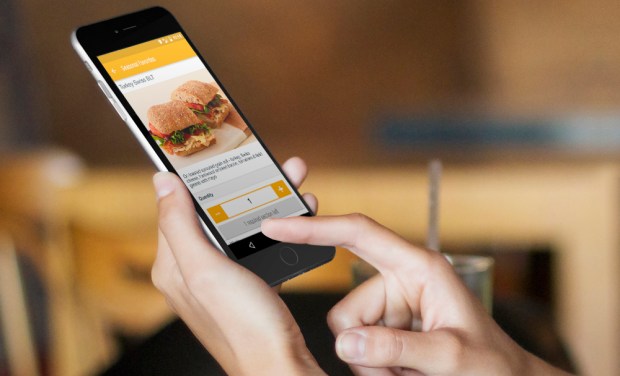What To Do When Mobile Ordering Eats Up Too Many Resources

At PYMNTS, we love mobile order ahead, but what happens when mobile ordering isn’t enough – or rather, when it’s too much? After getting their first taste of mobile ordering, some restaurants are finding it’s not to their liking and are sending it back to the kitchen.
Mobile apps – both restaurant-specific ones, and aggregators like UberEATS – can make ordering easier for the consumer. Yet for restaurants, where the game is always to keep the customer happy, integrating a myriad of different solutions makes life anything but easier – and while the customer may be happy, the staff sure isn’t.
It’s not uncommon to see four different tablets from four different delivery partners at the hostess station in a restaurant that offers mobile ordering. Not only is that a lot of juggling for employees, but it’s also a lot of redundancy, since orders coming in on the tablets must be re-typed into the restaurant’s system before the kitchen can get working on them.
Sure, offering delivery through partners like Grubhub, DoorDash and Caviar boosts visibility and drives additional sales, but is it worth the headache? Some say yes, some say no.
Often, having more delivery and ordering options means having more staff, and third-party delivery providers take commissions between 10 to 30 percent of the order price – so any extra profit can get gobbled up immediately by the very mechanisms that create it. By contrast, in-house orders are easier to process, and the restaurant gets to keep 100 percent of the bill.
It’s not just restaurants taking a step back. The shine may be wearing off this industry darling for investors, too, leaving smaller startups high and dry – and with no choice but to take a deal from a bigger player.
Reuters reports that since 2011, three dozen startups have received initial funding in the space, and a 33 percent uptick in delivery traffic from 2012 to 2015 seemed a clear indicator that things were going well in the space.
Yet now, these same startups are cannibalizing each other. Grubhub alone has swallowed up Campusfood, Allmenus, DiningIn, Restaurants on the Run, Delivered Dish, LAbite and, most recently, Foodler, and has merged with Seamless. Others, including Sprig, SpoonRocket and Chef Nightly, didn’t survive at all.
All this consolidation, however, could be a good thing for restaurateurs who feel overwhelmed by the options – and all the hardware that goes with them.
Another potentially helpful shift? There’s a point of sale (POS) terminal specifically designed to integrate mobile and online orders with the existing in-house system – which, notes ChicagoNow, not only eliminates steps for employees, but also cuts back on opportunities for human error by saving staff from re-entering those orders manually.
Grubhub is reportedly the first mobile ordering platform to team up with this new POS, NCR Aloha. Grubhub told ChicagoNow that it expects this restaurant technology to make operations more efficient by reducing the need for extra staff, saving time on menu updates, consolidating financials and freeing up space on the delivery tablet counter, which it admits has grown crowded in recent years.
Grubhub said it sees the partnership as a win-win that “will allow them [restaurants] to spend more time creating delicious food for diners and help build the best possible future for restaurant owners, Grubhub and the space.”
In other words, by helping restaurants do what they do best, Grubhub also gets to do what it does best. That’s why it’s been teaming up with multiple POS systems, not just NCR Aloha. By integrating with whatever tools a restaurant is already using, business owners are free to focus on what they came to the industry to do, and that’s make food and serve customers – not futz around with half a dozen tablets at the point of sale.
Brendan Witcher, an analyst with Forrester, told Reuters, “The challenge with delivery isn’t just delivery itself … (It’s) about being able to have the restaurant say, ‘I don’t know how we ever did business before this service.’”
So, has mobile ordering made itself indispensable to restaurants? Certainly not to all of them, although some would argue a business can’t survive without it today. But does that mean restaurants should just skip it altogether? Let’s not throw the baby out with the bathwater.
